Vemer VE 501E Handleiding
Vemer
Niet gecategoriseerd
VE 501E
Bekijk gratis de handleiding van Vemer VE 501E (3 pagina’s), behorend tot de categorie Niet gecategoriseerd. Deze gids werd als nuttig beoordeeld door 64 mensen en kreeg gemiddeld 4.4 sterren uit 32.5 reviews. Heb je een vraag over Vemer VE 501E of wil je andere gebruikers van dit product iets vragen? Stel een vraag
Pagina 1/3

ISCOM069-1809
Mod. VE 501E
Descrizione dello strumento
Manuale d’Uso
TESTER DIGITALE
Leggere attentamente tutte le istruzioni
Tester digitale per la misura di tensioni AC e DC, correnti DC, resistenze, prova diodo, prova transistor, test di
continuità. E’ adatto per l’uso professionale sul campo in laboratorio e per uso domestico.
Codice Modello Descrizione
VE772700 VE 501E Tester digitale
CARATTERISTICHE TECNICHE
• Indicazione massima: 1999 (3 ½ digits)
• Lettura della misura: 2/3 volte ogni secondo
• Pulsante per attivazione funzione data hold
• Display retroilluminato
• Selettore rotativo a 20 posizioni per impostazione funzione
• Alta sensibilità: 100µV
• Impedenza: 100MΩ su tutti i range DCV e ACV
• Visualizzazione automatica fuori scala (visualizzazione “1” )
• Alimentazione: 1x6F22 (batteria 9V) con segnalazione batteria scarica
• Indicazione automatica della polarità per misure DC
• Indicazione sonora nel caso di misure fuori scala di tensioni, correnti, resistenze
• Prova diodo con corrente costante 1mA
• Prova transistor hFE con corrente di base 10µA
• Test di continuità con indicazione sonora sotto i 50 ohm
• Massima tensione di modo comune: 380V AC/DC rms
• Condizioni ottimali di funzionamento: 23°C ± 5°C. < 75% RH
• Temperatura di funzionamento: 0 ÷ 40 °C
• Umidità di funzionamento: < 80% RH fino a 31°C, decrescente fino al 50% RH a 40°C
• Condizioni di immagazzinamento: -10°C ÷ +50°C, <80% RH
• Peso e dimensioni: 260g circa, 74x145x40 mm
• Accessori in dotazione: manuale d’uso, puntali per test
• Categoria di isolamento (over voltage category): CAT II 1000V
• Grado di inquinamento: 2 (IEC-664)
FUNZIONE JACK UTILIZZATI SOVRACCARICO MASSIMO
V/DC V/Ω + COM 1000V DC
V/AC V/Ω + COM 750V rms. AC
OHM V/Ω + COM 250V DC/AC (Protetto)
uA /mA DC, AC uA/mA + COM 0,5A 250V DC/AC
10A / DC, AC 10A +COM 10A 250V DC/AC
Diodo, continuità V/Ω + COM 250V DC/AC (Protetto)
hFE/LED 1000Sockets dedicato
FUNZIONAMENTO
Precauzioni
1. Controllare la carica della batteria spostando il selettore di funzione dalla posizione OFF
in qualsiasi altra posizione. Se la batteria è scarica, compare l’indicazione sul display: far
riferimento alla sezione in questo manuale per la sostituzioneMANUTENZIONE
2. Il simbolo vicino le boccole indica di far attenzione a non superare i valori di tensione o
corrente stabiliti al fine di prevenire danneggiamenti al circuito interno
3. Posizione il selettore nella posizione relativa alla misura da effettuare
4. Se l’ordine di grandezza della tensione o della corrente che si deve misurare non è noto a
priori, posizionare il selettore nella scala più elevata ed eventualmente posizionare il selettore
su una scala inferiore successivamente
5. Se il display visualizza il simbolo (over-range) posizionare il selettore su una scala più “1”
alta
6. Non misurare correnti superiori a 10A per più di 15 secondi per prevenire rotture dello
strumento o pericoli per l’utente.
7. Per evitare scosse elettriche, disconnettere i puntali prima di rimuovere la cover posteriore
8. Per una protezione continua contro gli incendi, sostituire i fusibili solo con altri aventi le
stesse caratteristiche.
Misure di tensioni continue DC
1. Posizionare il selettore nella scala V
2. Collegare il puntale nero al jack e il puntale rosso al jack “COM” VΩµA/mA
e successivamente posizionare i puntali sull’elemento da testare. Se si conosce la polarità del
circuito da testare, collegare il puntale nero al polo (-).
3. Il valore della tensione è visualizzato sul display
Nota: non applicare più di 1000V indipendentemente dalla scala selezionata, in quanto
tensioni superiori potrebbero causare il danneggiamento del dispositivo.
SCALA RISOLUZIONE PRECISIONE
200mV 0,1mV ±(1,2% of rdg + 5dgts)
2V 1mV
±(1,0% of rdg + 3dgts)
20V 10mV
200V 100mV
1000V 1V
ai sensi dell’art. 26 del Decreto Legislativo 14 marzo 2014, n. 49
“Attuazione della direttiva 2012/19/UE
sui rifiuti di apparecchiature elettriche ed elettroniche (RAEE)”
Il simbolo del cassonetto barrato riportato sull’apparecchiatura o sulla sua
confezione indica che il prodotto alla fine della propria vita utile deve essere raccolto
separatamente dagli altri rifiuti. L’utente dovrà, pertanto,
conferire l’apparecchiatura giunta a fine vita agli idonei centri comunali di raccolta
differenziata dei rifiuti elettrotecnici ed elettronici.
In alternativa alla gestione autonoma è possibile consegnare l’apparecchiatura che si desidera
smaltire al rivenditore, al momento dell’acquisto di una nuova apparecchiatura di tipo equivalente.
Presso i rivenditori di prodotti elettronici con superficie di vendita di almeno 400 m
2
è inoltre possibile consegnare gratuitamente, senza obbligo di acquisto, i prodotti elettronici
da smaltire con dimensioni inferiori a 25 cm.
L’adeguata raccolta differenziata per l’avvio successivo dell’apparecchiatura dismessa
al riciclaggio, al trattamento e allo smaltimento ambientalmente compatibile contribuisce ad evitare
possibili effetti negativi sull’ambiente e sulla salute e favorisce il reimpiego
e/o riciclo dei materiali di cui è composta l’apparecchiatura.
MA X
NP N
P NP
E ECB
20 M
2M
20 0K
20 K
2K
20 0m A
20 mA
10 A
2m A
20 0 A
20 0m
20 0
2
20
20 0
10 00
V
75 0V
20 0V
60 0V
10 00V
CAT
CAT
FU SE D
MA X 10 A
10A
COM
DC 10 00 V/ 0.2 A
DC 75 0V /0 .2A
V A/ mAΩ
Ω
O FF
BL CT R
O LD
VE 501E
1.
2.
4.
5.
6.
8.
3.
7.
1. Display Lcd Con Retroilluminazione
2. Tasto Attivazione Retroilluminazione
3. Tasto Hold
4. Selettore Di Funzione
5. Socket Per Prove Transistor
6. Jack
VΩµA/mA
7. Jack 10A
8. Jack COM
Misure di tensioni alternate AC
1. Collegare il puntale nero al jack e il puntale rosso al jack “COM” VΩµA/mA
e successivamente posizionare i puntali sull’elemento da testare
2. Posizionare il selettore nella scala V~
3. Il valore della tensione è visualizzato sul display
Nota: non applicare più di 250V sulla scala 200mV e 750V sulle altre scale in quanto tensioni
superiori potrebbero causare il danneggiamento del dispositivo.
SCALA RISOLUZIONE PRECISIONE
200V 100mV ±(1,5% of rdg + 3dgts)
750V 1V ±(2,0% of rdg + 5dgts)
Range di frequenze: da 40 a 400Hz
Misure di correnti continue DC
1. Collegare il puntale nero al jack e il puntale rosso al jack per correnti “COM” VΩµA/mA
fino a 400mA. Per correnti superiori e comunque fino a 10A, spostare il puntale rosso sul jack
“10A”
2. Posizionare il selettore nella scala delle correnti adeguata e successivamente posizionare i
puntali sull’elemento da testare
3. Il valore della corrente è visualizzato sul display
Nota: il valore massimo della corrente di ingresso è di 0,2A o 10A in funzione di quale jack
è utilizzato. Correnti eccessive rischierebbero di rovinare il fusibile di protezione, che può
comunque essere sostituito. Ci sono due fusibili diversi per la protezione del circuito a 0,2A
(0,5A) e quello a 10A (10A). La caduta di tensione massima sui terminali è di 200 mA eccetto
per la scala 10A.
SCALA RISOLUZIONE PRECISIONE
0.2 mA
±(1,5% of rdg. +5 digits)
0,1 μA
2 mA 1 μA
20 mA 10μA
200 mA 100μA
10A 100μA ±(2,5% of rdg.+3 digits)
Misure di resistenza
1. Collegare il puntale nero al jack e il puntale rosso al jack “COM” VΩµA/mA
2. Posizionare il selettore nella scala adeguata e successivamente posizionare i puntali Ω
sull’elemento da testare
3. Il valore della resistenza è visualizzato sul display
Nota 1: se la resistenza da misurare è superiore a 1 MOhm, potrebebro essere necessari
alcuni secondi affinchè il valore visualizzato sul display divenga stabile.
Questo comportamento è normale per valori di resistenza elevati
Nota 2: finchè i terminali non sono connessi sull’elemento da testare (circuito aperto), il
display visualizza la scritta (over-range)"1."
Nota 3: quando si effettuano misure di resistenza, assicurarsi che il circuito in esame non sia
in tensione e che i componenti capacitivi siano completamente scarichi
SCALA RISOLUZIONE PRECISIONE
200Ω 0.1Ω
±(1,2% of rdg + 5dgts)
2KΩ 1Ω
20KΩ 10Ω
200KΩ 100Ω
2MΩ 100Ω
20MΩ 10KΩ ±(2,5% of rdg + 3dgts)
Protezione da sovratensione tramite PTC: 250V AC/DC rms
Test del diodo
1. Collegare il puntale nero al jack e il puntale rosso al jack “COM” VΩµA/mA
2. Posizionare il selettore in posizione e successivamente posizionare i puntali
sull’elemento da testare.
3. Il valore della tensione di lavoro del diodo è visualizzato sul display.
Protezione da sovratensione tramite PTC: 250V AC/DC rms
Test continuità
1. Collegare il puntale nero al jack e il puntale rosso al jack “COM” "VΩµA/mA"
2. Posizionare il selettore in posizione
3. Posizionare i puntali sull’elemento da testare: se la resistenza misurata è inferiore a 50Ω, il
buzzer suona.
Protezione da sovratensione tramite PTC: 250V AC/DC rms
Test transistor hFE e LED
1. Determinare il tipo di transistor e individuare i terminali emettitore-base-NPN PNPo
collettore.
2. Posizionare il selettore nella posizione
3. Inserire i pin del transistor nelle feritoie presenti sul frontale dello strumento relative alla
tipologia di transistor (NPN o PNP)
4. Il display visualizza il valore . Condizioni di test: 10 µA VCE 2,8V.hFE
5. Per il test dei LED, inserire i pin del led nelle feritoie e della fila “C” “E” “NPN”,
rispettando la polarità indicata.
RETROILLUMINAZIONE
Il display del dispositivo è dotato di retroilluminazione per agevolare la lettura dei valori
misurati in condizione di scarsa illuminazione. Per attivare la retroilluminazione, tenere
premuto il tasto BLCTR per almeno 2 secondi (il selettore non deve essere in posizione OFF).
La retroilluminazione si spegne automaticamente trascorsi 15 secondi.
MANUTENZIONE
Attenzione: prima di procedere con la sostituzione della batteria e dei fusibili di protezione,
rimuovere i puntali e posizionare il selettore in posizione OFF
Per sostituire la batteria
1. Svitare le viti poste sul retro del dispositivo e rimuovere la cover posteriore.
2. Sostituire la batteria esausta con una nuova avente le stesse caratteristiche
9 Volt tipo 6F22.
3. Riposizionare la cover posteriore e avvitare le viti
Per sostituire i fusibili
1. Se il dispositivo non misura i valori di corrente, controllare che il fusibile di protezione non
sia danneggiato. In questo caso, sostituire il fusibile in questione con uno di tipo equivalente.
2. Sono presenti due tipi di fusibile a seconda del circuito da proteggere:
0,5A/250V (per scala mA) o 10A/250V (per scala 10A)
PULIZIA
Per pulire il dispositivo usare un panno umido dopo averlo spento ed aver tolto i puntali.
Non usare liquidi, solventi o altri prodotti che possano ridurre il livello di sicurezza del
dispositivo.
NORME DI RIFERIMENTO
La conformità alle Direttive Comunitarie:
2014/35/UE (LVD), 2014/30/UE (E.M.C.D.)
è dichiarata con riferimento alle seguenti Norme armonizzate:
• CEI EN 61010-1
• CEI EN 61010-031
• CEI EN 61326-1, CEI EN 61326-2-2

ISCOM069-1809
Mod. VE 501E
Description
MA X
NP N
P NP
E ECB
20 M
2M
20 0K
20 K
2K
20 0m A
20 mA
10 A
2m A
20 0 A
20 0m
20 0
2
20
20 0
10 00
V
75 0V
20 0V
60 0V
10 00V
CAT
CAT
FU SE D
MA X 10 A
10A
COM
DC 10 00 V/ 0.2 A
DC 75 0V /0 .2A
V A/ mAΩ
Ω
O FF
BL CT R
O LD
VE 501E
1.
2.
4.
5.
6.
8.
3.
7.
1. Backlit Lcd Display
2. Backlit Button
3. Hold Button
4. Rotary Switch For Function Selection
5. Socket For Test Transistor
6. Jack
VΩµA/mA
7. Jack 10A
8. Jack COM
User Manual
DIGITAL TESTER
Read all the instructions carefully
Digital tester for measurement of: AC/DC voltage, DC current, resistance, diode test, transistor 2 LED test,
continuity test.
It is designed for the professional at work in the field or laboratory and for in-door use.
Code Model Description
VE772700 VE 501E Digital Tester
GENERAL CHARACTERISTICS
• Maximum Indication: 1999 counts (3 1/2 digits) with large backlit LCD display
• Sampling rate: 2-3 times reading per second (approximate).
• Push-type Switch buttons respectively for Data Hold-on (Hata-H), Back-lighting (BLCTR).
• Single 20 positions easy to use rotary switch for Ten Functions and Range selection.
• High sensitivity of 100µV.
• Impedance: 10MΩ on all DCV & ACV Ranges.
• Automatic over-range indication with the “1” displayed.
• Automatic low battery power indication with the mark of battery shape.
• Automatic polarity indication on DC ranges.
• Beeper warning for over-ranging measurement at all ranges of Voltage/Current/Resistance.
• Diode testing with 1mA fixed current.
• Transistor hFE Test With ib-10µA.
• Continuity Test by Beeper sounding below 50 ohm.
• Maximum common mode voltage: 380V DC/AC rms.
• Environment for guaranteed accuracy: 23°C±5°C, less than 75% RH.
• Temperature Scope: Operating 0°C to 40°C, 32°F to 104°F. Max. RH
80% to 31°C decreasing linear to 50% RH at 40°C.
• Storage: -10°C to 50°C, 14°F to 122°F at < 80% relative humidity.
• Power Supply: One 6F22 9-volt battery or equivalent.
• Size & Weight: 74(W) x 145(D) x 40(D) m/m and 260g (including battery).
• Accessories: Operating manual, 1Set of test leads: AWG18 1000V PVC Wire
• This instrument complies with insulation category (over voltage category), CAT II 1000V.
• Pollution degree 2 in accordance with IEC-664
Function Test Leads connected Overload Maximum
V/DC V/Ω + COM 1000V DC
V/AC V/Ω + COM 750V rms. AC
OHM V/Ω + COM 250V DC/AC Protected
uA /mA DC, AC uA/mA + COM 0.5A 250V DC/AC
10A / DC, AC 10A +COM 10A 250V DC/AC
Diode, Buzz V/Ω + COM 250V DC/AC Protected
hFE/LED Special Transistor Sockets Hfe 1000
OPERATIONS
Safety warnings and cautions
1. Check the 9-volt battery by setting the range switch to any other range but . If the OFF
battery is weak. A sign will appear on the display. If this does not appear on the display
proceed as below. See MAINTENANCE if the battery has to be replaced.
2. The mark or sign next to the test lead jacks is for warning that the input voltage or
current should not exceed the indicated values. This is to prevent damage to the internal
circuit.
3. The function switch should be set to the range to be tested before operation.
4. If the voltage or current range is not known beforehand set the RANGE switch to a high range
and work down.
5. When only the figure is displayed over-range is being indicated and the FUNCTION “ 1”
switch must be set to a higher range.
6. Please do not measure large current over 10 amp lasting more than 15 seconds. Otherwise
such long time action may cause damage to the instrument and or equipment being tested
and or injury to the user.
7. To avoid electric shock, disconnect measuring terminals before removing back cover.
8. For continued protection against fire, replace only with fuses or components of the specified
voltage, current, resistance, and other rated.
DC Voltage Measurement
1. Set the Range select switch to the V .
2. Connect the BLACK test lead to the jack and the RED test lead to the COM VΩµA/mA
jack. And then connect the test leads across the source or load under measurement. The
polarity of the RED lead connection will be indicated at the same as the voltage.
3. Get the readings from the LCD.
NOTE: Do not apply more than 1000V at all ranges to the input. Indication is possible at
higher voltages there is danger of damaging the internal circuit.
Range Resolution Accuracy
200mV 0.1mV ±(1.2% of rdg + 5dgts)
2V 1mV
±(1.0% of rdg + 3dgts)
20V 10mV
200V 100mV
1000V 1V
AC Voltage Measurement
1. Connect the BLACK test lead to the COM jack and the RED test lead to the VΩµA/mA jack.
2. Set the FUNCTION switch to the range to be used and connect the test leads across the V~
source or load under measurement.
3. Get the readings from the LCD.
NOTE: Do not apply more than 250V at 200mV range and 750V rms. at other ranges to the
input. Indication is possible at higher voltages but there is danger of damaging the internal
circuitry.
Range Resolution Accuracy
200V 100mV ±(1.5% of rdg + 3dgts)
750V 1V ±(2.0% of rdg + 5dgts)
Frequency Range: 40 to 400Hz
DC Current Measurement
1. Connect the BLACK test lead to the jack and the RED test lead to the jack COM VΩµA/mA
for Current Maximum of 400mA (Note: The polarity of the RED test lead is “+”).
For a maximum of 10A, move the red test lead to the 10A jack.
2. Set the FUNCTION switch to the or 10A range to be used and connect the test leads uA/mA
in series with the load under measurement.
3. Get the readings from the LCD.
Note: The Maximum input current is 0.2A or 10A depending on the jack used. Excessive
current will blow the fuse that must be replaced. Another fuse 10A protects the 10A range.
The fuse rating should be 0.5A or 10A to prevent damage to the internal circuit. The
Maximum terminal voltage drop is 200mV except for the 10A range.
Range Accuracy Resolution
0.2 mA
±(1.5% of rdg. +5 digits)
0.1 μA
2 mA 1 μA
20 mA 10μA
200 mA 100μA
10A 100μA ±(2.5% of rdg.+3 digits)
Resistance Measurement
1. Connect the BLACK test lead to the jack and the RED test lead to the COM VΩµA/mA jack
(Note: The polarity of the RED test lead is “+”)
2. Set the FUNCTION switch to the range to be used and connect the test leads across the Ω
resistance under measurement.
3. Get the readings from the LCD.
Note:
a. If a resistor of approximate 1M Ω above, the Meter may take a few seconds to become
stable. This is normal for high resistance readings.
b. When the input is not connected i.e. at open circuit the figure will be displayed for "1."
the over-range condition.
c. When checking in-circuit resistance, be sure the circuit under test has all power removed
and that all capacitors are fully discharged.
Range Resolution Accuracy
200Ω 0.1Ω
±(1.2% of rdg + 5dgts)
2KΩ 1Ω
20KΩ 10Ω
200KΩ 100Ω
2MΩ 100Ω
20MΩ 10KΩ ±(2.5% of rdg + 3dgts)
Overload Protection by PTC: Max. AC/DC 250V rms.
Diode Measurement
1. Connect the BLACK test lead to the jack and the RED test lead to the COM VΩµA/mA
jack.
( Note: The polarity of the RED test lead is “+”)
2. Set the FUNCTION switch to the range and connect the test leads across the diode
under measurement display shows the approximate forward working voltage of this diode.
3. Overload protection by PTC against high Voltage across Max. DC/AC 380V rms. at this Diode
range.
Continuity Test
1. Connect the BLACK test lead to the jack and the RED test lead to the COM VΩµA/mA
jack.
2. Set the FUNCTION switch to the range and then the LCD shows the
approximate resistance of the circuit.
3. Connect the test leads to two points of circuit. If the resistance is lower than approx. 50
ohm, the buzzer sounds.
Overload protection by PTC against high Voltage across Max. DC/AC 250V rms. at this
range.
Transistor hFE & LED Test
1. Set the Range switch to the hFE/LED range.
2. Determine whether the transistor is or and locate the Emitter, Base and NPN PNP
collector terminals. Insert the pin into the proper holes of the special socket on the front
panel.
3. The display will read the approximate Hfe Value at the test condition Base Current 10μA.
VCE 2.8V.
4. For LED test, firstly set the Range switch to the range, and then directly insert “NPN”
the two poles of LED separately into the “ jacks of the special Hfe input E” e “C”
sockets on the front panel. And then check if the LED brighting.
Back Lighting Operation
1. Set the Range switch to any range but OFF.
2. Push the BLCTR button two seconds, and then the LCD can be lit for easy reading
3. After 15 seconds, the light will be turned off. And then push the button 2s. once again, It
will be lighting again.
MAINTENANCE
Replacement for Batteries and/or Fuse should only be done after the test leads have been
disconnected and POWER OFF.
9-Volt Battery Replacement
Remove the two screws from the back case of the meter, and lift off the rear case. Take off
the worn battery from the cabinet and replace a new battery with the same type 9-volt 6F22
battery or equivalent. And then recover the back case and tighten the screws.
Fuse Replacement
When current measurements are impossible, check if overload protection fuse blown. There
are two kinds of Fuse. Should the fuses need replacement use only 0.5A/250V or 10A/250V
fuses identical in physical size to the original.
CLEANING
To clean the device, use a damp cloth after having turned it off and removing the leads.
Do not use liquids, solvents or other products that can reduce the safety level of the device.
REFERENCE STANDARDS
Compliance with Community Directives:
2014/35/EU (LVD), 2014/30/EU (E.M.C.D.)
is declared in reference to the harmonized Standards
• EN 61010-1
• EN 61010-031
• EN 61326-1, EN 61326-2-2
This symbol on the product and/or accompanying documents
means that used electrical and electronic products should not
be mixed with general household waste.
For proper treatment, recovery and recycling, please take this
product to designated collection.
Product specificaties
| Merk: | Vemer |
| Categorie: | Niet gecategoriseerd |
| Model: | VE 501E |
Heb je hulp nodig?
Als je hulp nodig hebt met Vemer VE 501E stel dan hieronder een vraag en andere gebruikers zullen je antwoorden
Handleiding Niet gecategoriseerd Vemer
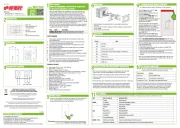
17 Juni 2025

5 September 2023

17 Juni 2023

17 Juni 2023

12 Juni 2023

5 Juni 2023

2 Juni 2023

31 Mei 2023

29 Mei 2023

24 Mei 2023
Handleiding Niet gecategoriseerd
- Sigma
- Inglesina
- Fuzzix
- Veise
- Optex
- CSL
- Nautilus
- Escort
- Mobotix
- BlueBuilt
- ISA
- CkeyiN
- PSSO
- Marshall
- Sightmark
Nieuwste handleidingen voor Niet gecategoriseerd
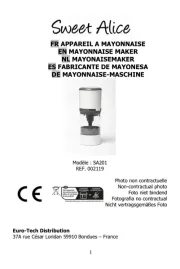
15 September 2025

15 September 2025

15 September 2025
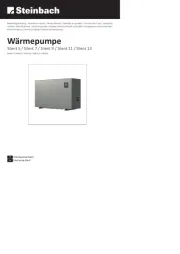
15 September 2025
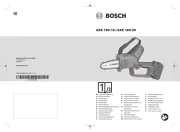
15 September 2025

15 September 2025

15 September 2025
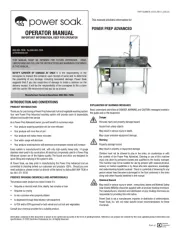
15 September 2025

15 September 2025
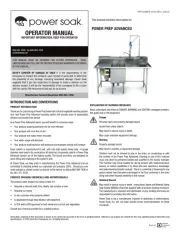
15 September 2025